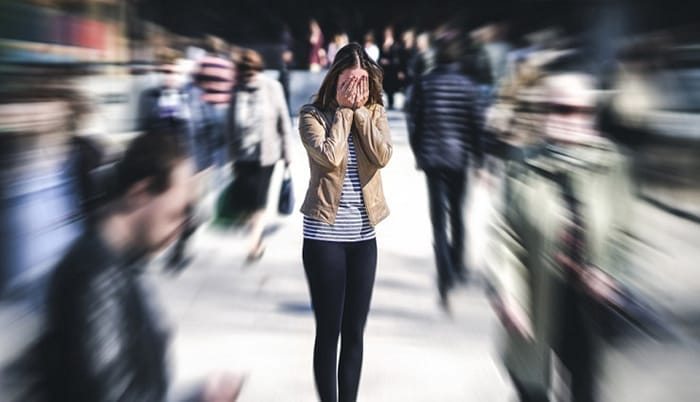Agoraphobia is an anxiety disorder characterized by the fear of not being able to escape from trouble or seek help when anxiety escalates. Individuals with this disorder may exhibit traits such as excessive dependency, immaturity, social anxiety, and fear of taking on responsibilities.
The term
Causes of agoraphobia
Genetics and family history: Environmental and genetic factors are involved in the development of agoraphobia. Researches show that most traumatic events can trigger the onset of the disorder, and the most common ones are the loss of important people in life and physical threats.
Another contributing factor is the fear of death, which causes agoraphobia.
While most individuals with
People with agoraphobia disorder do not have the same fears. A person may be afraid of one or more different situations and places. The presence of physical symptoms can lead to severe anxiety, known as fear of fear.

Scary situations for people with agoraphobia
Situations feared by patients include:
- Large spaces such as shopping malls or public squares
- Closed spaces, for example, public transport, tunnels, elevators, or cinemas
- Public places such as restaurants, queues, or gatherings
- High places, for example, bridges or escalators
- Inner fears such as fear of loneliness.
Agoraphobic hypersensitivity to internal bodily sensations is usually triggered in the context of a fearful external situation. however, it may occur in calm situations such as hot weather, intense activity, hunger, or disturbing thoughts.
Effects of agoraphobia
Agoraphobia causes three main events:
- Anticipatory anxiety from exposure to a phobic situation
- Reaction to Anxiety
- Avoidance behavior that allows the patient to reduce anxiety
Anxiety and constant waiting
In this case, the person isn’t necessarily in a situation that triggers a phobia but has anxiety about the possibility of something undesirable occurring, such as the fear of illness, the fear of an accident, or the fear of losing control. For this reason, he may avoid leaving the house to prevent an accident. Some agoraphobics fear experiencing psychological harm like shame or rejection.
Persistent thoughts about stressful situations
Agoraphobics are afraid of having a panic attack, which is why they avoid situations they perceive as dangerous. Not all patients experience panic attacks; some may only have two or three main symptoms, such as dizziness or a feeling of suffocation.
Avoidance behavior of an agoraphobic person
A person is aware of the inappropriate and unrealistic nature of his fears, so he tries to control his fears by using strategies. Initially, a person attempts to adapt his behavior to the situation, such as going out with trusted individuals. If he is alone, he would choose a safe route and be prepared to return home quickly in case of a problem.
Age of onset of agoraphobia
The age of onset of symptoms and its aggravation is in late adolescence or around 30 years old. However, most patients experience their first symptoms between the ages of 20 and 39.
The fundamental experience of agoraphobia patients
The first experience of a person with agoraphobia is typically panic attacks. Mathews, Golder, and Johnston considered panic attacks as severe states of generalized anxiety. Later, a different concept was presented by Klein, who distinguished between panic attacks and other types of anxiety and proposed separate mechanisms for the two. Therefore, he suggested classifying agoraphobics into two subgroups: agoraphobia with panic attacks and agoraphobia without panic attacks.
The second dominant agoraphobic experience is depersonalization. People with agoraphobia feel as though they are seeing the world through a haze of fog, and they lose their sense of self, feeling in a vague and unstable state.
Unlike panic attacks, which increase the psychophysiological response, a decrease in the GSR response is evident during depersonalization. Depersonalization is considered a type of defense mechanism that is activated to protect the individual from experiencing anxiety beyond their tolerance level.
Suggested article: What are mental disorders and what are their types?

The impact of agoraphobia on daily life
Agoraphobia can severely affect their daily life in cases such as:
- Social isolation
- Impaired daily functioning
- Limited lifestyle
- Emotional distress
- Physiological problems
- Financial Problems
- Causing disorders such as depression
Treatment of agoraphobia
Treatment of agoraphobia is a gradual process that may involve several methods, such as:
- Exposure therapy
- Cognitive behavioral therapy
- Using medication
- Self-awareness and self-care
These are the ways of treatment. In this way, the emotional support of those around you and meditation training are beneficial.

